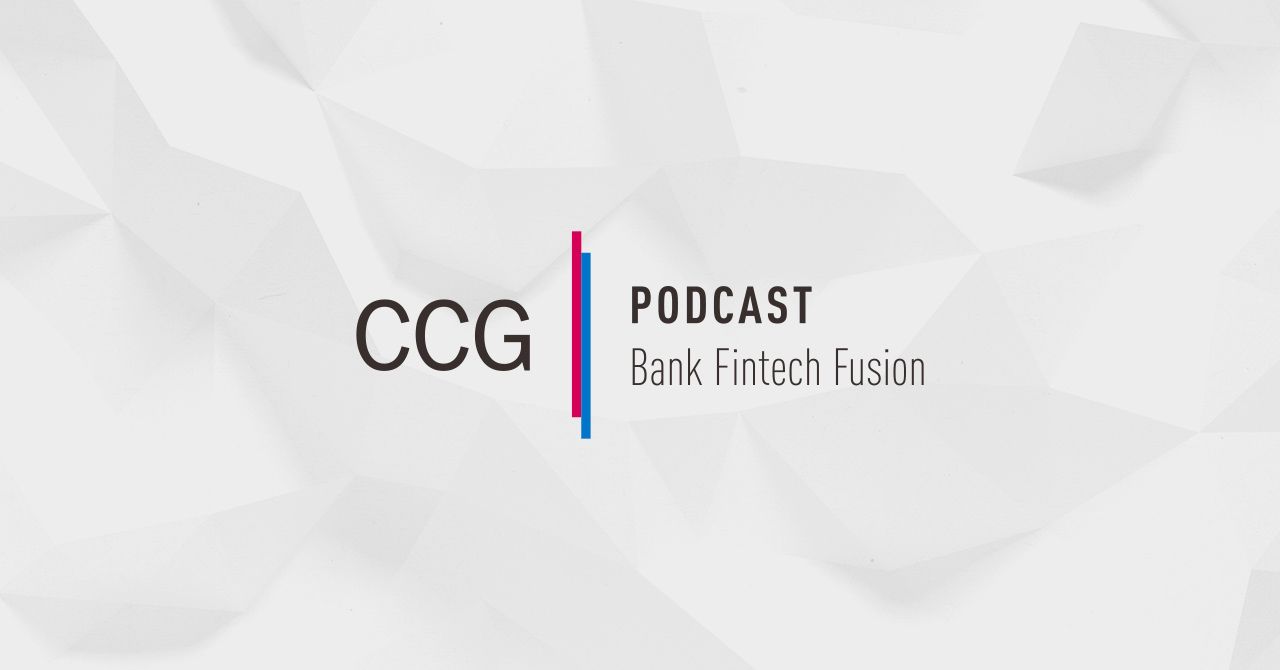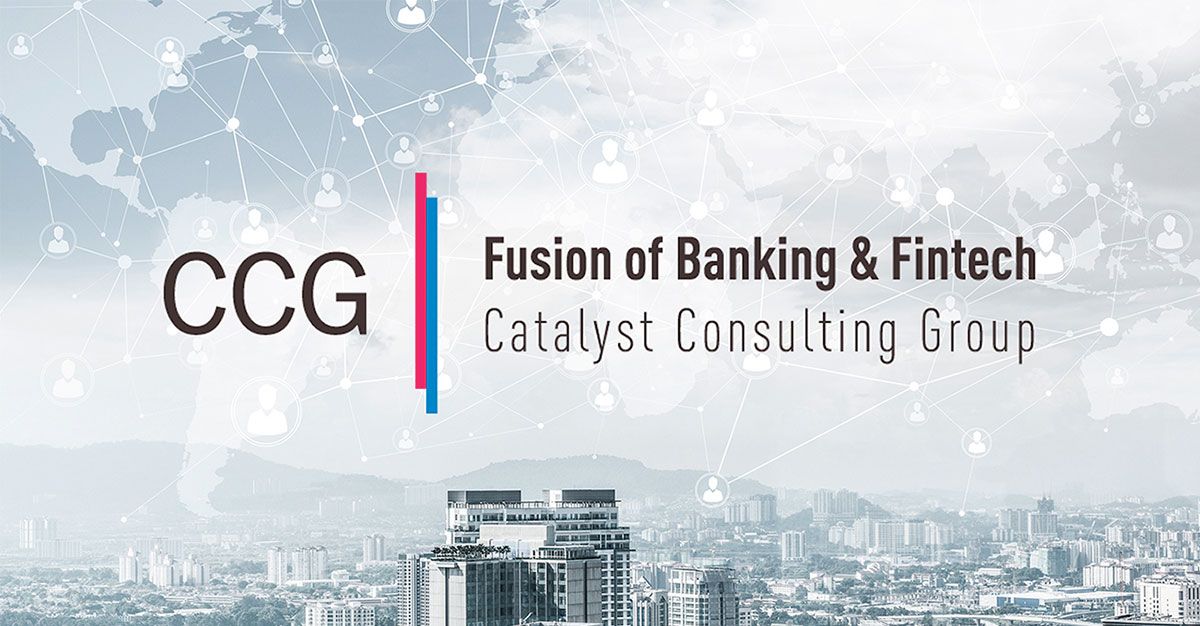John Peckham and Tiana Brown will help you discover the top 4 best practices your teams can adopt by establishing a commitment to operational alignment. Business unit assessments should be an ongoing process and exercised as changes in your organization take place. Keeping up with updates, making necessary KPI adjustments, and monitoring risk exposure is critical to maintaining the success of your business unit’s impact.
Podcast: Download (Duration: 19:00 – 18.7MB)
Subscribe: Google Podcasts | Email
Read the full transcript below:
Tiana Brown [00:00:04] Hello, welcome to Bank Fintech Fusion’s fifth and final episode of the Bank Operational Alignment Series. I’m Tiana Brown, principal at CCG Catalyst, and with me I have John Peckham, also a Principal at CCG. Hello, John.
John Peckham [00:00:20] Hey Tiana, great to be back.
Tiana Brown [00:00:22] Yes, absolutely. I am excited about this conversation today as this series has been jam packed with tons of information we’ve discussed identifying how your business units performance supports reaching the overall organizational goals, how to gain full visibility of the overall health of your business unit. And last week, we discussed how to act on the identified needs for improvement and the importance of communicating why establishing role clarity and setting deadlines.
[00:00:55] So moving on to today’s episode, you and I are going to discuss how you can show a commitment to making operational alignment within your organization a priority today and going forward. Now, John, I’ve really enjoyed this podcast series, and I know that by taking action on recommendations and insights shared leaders in financial services will truly know that they are not alone when it comes to necessary changes. In addition, I hope that this brings about some movement really supporting leaders and taking the first step toward doing their part right in the organizational alignment goals.
[00:01:35] So, John, let’s begin by talking about some ways that leaders can remain up to speed on overall organizational strategy and how they should always be thinking, like, where does my team come into play here?
John Peckham [00:01:48] Yeah, I think that largely depends on where you sit within your organization. Right. If you are on the executive team as an example, you’re probably going to be pretty tightly tied in with your organization strategy. And that’s the strategy changes over time. You’re going to be pretty looped into that. If you’re lower in the management team within your organization, you may not have that kind of visibility. So I think it’s important that if your link to the executive management team is a downstream information to changes and priorities, changes in strategy, things like that, it’s incumbent upon you to reach out and have those conversations with your executive sponsor, if you will. What’s going on within the organization? Is anything changing? Is there anything I need to know about to either redirect my team or build up additional resources in a certain area or retrain some people things along those lines? I also think it doesn’t hurt to reach out beyond that one link to your executive team. I think it’s important that you build and maintain relationships with different people, with different skill sets, different areas of the organization, and communicate with them frequently.
[00:03:16] That’s not just going to help you understand where your company is going by way of strategy and changes of priorities and things of that nature. It’s going to help you better service those constituents.
Tiana Brown [00:03:29] I absolutely agree. And I think that if your relationship with the executive leadership team is not readily accessible or even when it is and you get that direction of the organizational goals, it’s important for that direct leader to really understand the functions of their team. And then if they better understand the functions of their team, that conversation with that executive is so much more valuable because then that’s where they connect the dots.
John Peckham [00:03:54] Absolutely. And it’s also important to know that that conversation shouldn’t stop with you if you’re a leader, if you’re a manager, if you’re a supervisor and your people working for you, reporting to you, it’s very important that you take that information regardless of how you capture it. And downstream to them, I think the more you can connect what your individual staff members do to achieving success within the organization, it’s going to continue to motivate them more and more and more and continue to improve the performance not just of that staff member, but of your whole team.
Tiana Brown [00:04:35] Yeah, I could not agree more. I think we talked about this on one of the podcasts where it drives that purpose inside of them. You have purpose in people. I mean, that’s like putting full throttle on your KPIs.
John Peckham [00:04:46] It goes right back to your why comment right.
Tiana Brown [00:04:49] Yeah, it really does. In episode three you and I discuss key performance indicators and how can these be used to measure ongoing progress and most importantly, continuous improvement?
John Peckham [00:05:02] Yeah, you know, I think we captured a lot of that in that episode that you referenced, but again, it’s the notion of identifying the indicators that are important to your constituents, the people you service, and reporting those out on a periodic, consistently periodic basis. So if you have something that triggers weekly, monthly, annually, whatever that is, establish the cadence that you’re going to report those out and be consistent with that.
Tiana Brown [00:05:33] Oh, yeah, because if you stop measuring them, you stop communicating them and you kind of abandon those checkpoints. Your performance will definitely alter, I think.
John Peckham [00:05:45] Right. And subconsciously, your customers may start to think what’s going on there? Is there more I should know that I don’t know. So yeah, I think continuing that periodic regular cadence and being consistent about it is important. Consistency builds trust. Trust builds strong relationships.
Tiana Brown [00:06:10] Completely agree.
John Peckham [00:06:11] So on that note, we also spoke about risks in episode three. And this, too, is very important to keep within your immediate scope. The first and most obvious step is to remember what you discovered before and have controls in place to prevent some of these risks in the future. What else can you kind of share with us on that note there Tiana?
Tiana Brown [00:06:38] I think when you discover risk, the first thing that comes to mind is the reality that there can be risk, and I think that I always say wearing a risk hat at all times, especially when you’re an operational leadership, it’s very important to understand the process, understanding what that process looks like if and when it runs smoothly, but most importantly, understanding if you choose to not manage it to run smoothly or there is a hiccup or your team doesn’t perform in accordance to the KPIs. So, for example, let’s say one of your KPIs is to fund X amount of dollars in loans by the end of each month. And as a result of that, you appease the investors that purchase these loans. So there’s a relationship risk there in the event that those KPIs are not followed. And another risk, in my experience that I’ve seen is let’s say that you have the ability for fraudsters to get in and abuse accounts. So I’ve worked in banking and let’s say that we see that there’s a link in this level of behavior when it comes to a specific debit card performance. If you don’t understand that that’s possible and have those controls in place that are then monitored, ongoing. So the thing that a lot of leaders, especially new leaders, would really benefit from understanding is that you identify risk and ideally you put a control in place. But if you don’t manage that control going forward, the control is kind of not a control anymore. It was just a quick fix. But you do need to check back on that and make sure that it’s actually operating and being effective.
John Peckham [00:08:16] Yeah, yeah. If you’re not continuing to follow that control, it was a great thought then. Right. And your comment about always where your risk had reminds me of the notion of three lines of defense. Right. If you are a business unit manager, you are that first line of defense from a risk perspective. And so you consistently and constantly need to be thinking from that perspective. That’s not to say to allow yourself to be hampered to avoid risk. It’s more to consider identifying risks when you see them, assessing the degree of risk. How much risk is there is something that I can live with? This is something I need to mitigate? Is it something that is within my realm of responsibility to make that call, or do I need to funnel it back up? Because again, this goes back to some comments that we talked about, and I think it was episode three, which is when you identify risk, you’re always better off to report data rather than keep it to yourself.
Tiana Brown [00:09:25] Yeah, I completely agree with that. And I think everything related to the operations piece, whether it’s the key performance indicators of managing the risk and even the process. So all of these things change all the time and you made a point a second ago about communicating to the bottom line. So we were referencing and speaking to your executive, understanding the deliverables, but then making sure your team understands it’s also important for your team to be comfortable with risk, just like in a gap and process. A lot of times you’ll notice a gap in process that doesn’t have a lot of risk. It just means we maybe have been skipping a step for five years that out of it. But when you respond as a leader and say, oh, great, thanks for bringing that to my attention, here’s the things that I need to know. Can you report this back to me? Your team is going to feel empowered again like we just touched on, and they’re going to be more comfortable identifying these episodes of risk that are inevitable to happen within the banking and fintech space.
John Peckham [00:10:24] You know, you’re spot on there. If you create an environment of fear, then your degree of risk you have within your organization is going to inherently continue to increase. Why? Because nobody’s going to want to report up or out that they’ve found something for fear of being chastised for. I think that your organization is always going to be healthier and stronger if you foster that kind of collaboration, that communication without fear of reprisal. Now, if it’s something that you should have been doing all along, you identify the risk because of lack of performance. Well, maybe that’s a different conversation. But even still, I think that can be handled in a way that that doesn’t scare people into bringing these things forward.
Tiana Brown [00:11:18] Yeah, and that’s such a great point, because we’re focusing a little bit on people right now, which is really important, because without people today, maybe many, many years from now. Right. But we still need some people. Would you agree that if you don’t react on the risk and you don’t mitigate that risk through a new process or a new documented process, let’s see improvement of behaviors. Where I’m going with this is that oftentimes if leaders don’t put a control in place, the employees tend to look at organization that doesn’t care or not fundamentally sound. We’re not really trying to run an operationally efficient line of business. And then employees actually lose engagement when we’re not driving the business in the direction of being secure, providing client services. I’ve seen in my day so many times that when a leader is slow to respond to an issue, the employees lose engagement because they don’t feel that we’re meant to do the right thing or follow a process, and then they begin to feel like their role is less important. But when you find that level of importance, I think it drives a lot.
[00:12:24] Sorry, I don’t know. I said that in the right way.
John Peckham [00:12:26] Yes, but there’s so much in what you just said, right. There’s this notion of how you communicate with your staff and the level of comfort that they have in communicating with you.
[00:12:39] There’s the notion of your staff being your secret source to success. Right. You said it. If you don’t have the people, you really have nothing. So as you kind of go through this, I think it’s really important to think about how you’re going to communicate with your staff, what your expectations of them are and make sure that they understand those and importantly understand what their expectations of you are. Once you’ve leveled the playing field, I think you should have a much better chance of identifying risks when they arise, mitigating them properly, coming up with the plans to do so, and then baking those into your KPIs so that you can see over time not just that you identify the risk, not just that you came up with a plan of how to address it, but how that plan is working out over time and when you might need to go back and revisit.
Tiana Brown [00:13:39] Yeah, because your employees are looking for it actually to be in effect, like you identify it, you plan it. And then what did you do? So when they see the do part that gets them excited and then they become an employee who raises their hand, provides a solution and looks forward to acting it out. And I think that that is that pays dividends long term.
John Peckham [00:13:59] Consistency and transparency builds trust. Trust builds successful relationships.
Tiana Brown [00:14:06] I love that and we could end there because that was good. We’ll carry on because we will close out this podcast today. But I want to be sure to discuss how important internal operations assessments are. I think these are an honest way to proactively identify opportunities in your business and to really make sure that your business unit is aligned with your organizational goals. So leaders really must understand that finding problems is not a problem. And overlooking or not implementing the best practices that lead to identify gaps, risk or performance impacts is the actual problem. So, John, as a previous leader and both of us in financial services and now as Principals here at CCG, what is your take on implementing and communicating organizational changes?
John Peckham [00:14:59] I think involve people in the process. If you include folks from the beginning, then they feel engaged, they feel valued. They feel like whatever the change ends up being, they were part of creating. And I think when you bring people along that way, there’s better buy in and you’re going to have better results in the long run. If you sit in a corner in your ivory office at the top of your skyscraper or whatever, and you devise some big change and then you kind of throw that down on people, there’s risk there. Why is this happening? Why is it coming as a surprise to me? I don’t understand it. I don’t agree with it. That is going to reduce your chance of success long term.
Tiana Brown [00:15:55] The point that stands out to me is the not agreeing and I’ve seen it two fold where they don’t agree because they don’t like change, they as in the employee. But I’ve also seen, I would say a higher percentage of the lack of agreement is because the leader making the decision is not close enough to the process. So where I have found my greatest wins as a leader when I was leading in operations was when I took the time to assess the team being new. And I saw who my key players were, I saw who my subject matter experts were and they became my right hand people. I just love them because I would say, what do you think about this? Hey, this is something that we might be thinking about. What would be your take on it? And again, that inclusiveness, which is huge today, really went a long ways in making these final operational decisions, because not only do you have as a leader who’s confident about the change being address of the executives, excited, they need to make this change for production, then you’re excited as a leader. But when you have an actual team member who believes in that change, that’s another level of communication and relatability that can help drive that performance.
John Peckham [00:17:02] Change scares people. I mean, that’s a natural thing. The more you engage people in the process of defining change, the less scary it becomes for them.
Tiana Brown [00:17:15] Yeah, and we really I think what we tend to forget which is going it, which is touching back on finding problems is not the problem. Right. So when we realize that we are within an umbrella of an organization, so a bank or fintech, when there’s problems, we’re all in it together to fix it because it actually becomes all of our problem, if it’s on your team. So I think it’s really important to be comfortable with that, with that transition. Now, is there anything else, John, that you’d like to add on that piece?
John Peckham [00:17:48] You know, I think we covered a lot of ground here today. I think so, too. I think to kind of pin on a couple of high points, one identifying risk is actually a good thing. Two communicate it. Three, come up with a plan to address it. Four, when you are facing change, engage the people who are going to be impacted to help define and implement the change, and I think that’s all great advice for anyone to take away.
Tiana Brown [00:18:19] Yeah, I completely agree. And I thank you for sharing that and being on today’s podcast with me again.
John Peckham [00:18:24] Absolutely. It was great fun. We should do it again sometime.
Tiana Brown [00:18:27] We should. I’m sure we will.
[00:18:29] That fills up our final episode of the five part series on operational alignment. Thank you for listening to today’s podcast. If you’ve enjoyed this topic and are interested in learning more about the operational alignment, please subscribe to our Bank Fintech Fusion Channel. Again, this is Tiana Brown and John Peckham Principals CCG Catalyst and be sure to share this series today with partners and colleagues. Thank you for listening.







